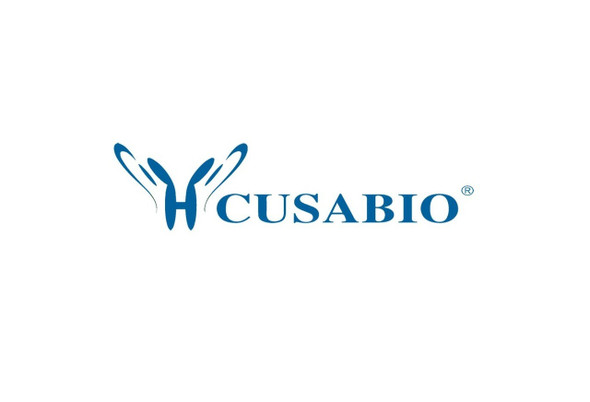Cusabio Mouse Recombinants
Recombinant Mouse Apolipoprotein C-III (Apoc3) | CSB-EP001933MO
- SKU:
- CSB-EP001933MO
- Availability:
- 3 - 7 Working Days
Description
Recombinant Mouse Apolipoprotein C-III (Apoc3) | CSB-EP001933MO | Cusabio
Alternative Name(s): Apolipoprotein C3
Gene Names: Apoc3
Research Areas: Others
Organism: Mus musculus (Mouse)
AA Sequence: EEVEGSLLLGSVQGYMEQASKTVQDALSSVQESDIAVVARGWMDNHFRFLKGYWSKFTDKFTGFWDSNPEDQPTPAIES
Source: E.coli
Tag Info: N-terminal 6xHis-SUMO-tagged
Expression Region: 21-99aa
Sequence Info: Full Length of Mature Protein
MW: 24.9 kDa
Purity: Greater than 90% as determined by SDS-PAGE.
Relevance: Component of triglyceride-rich very low density lipoproteins (VLDL) and high density lipoproteins (HDL) in plasma. Plays a multifaceted role in triglyceride homeostasis. Intracellularly, promotes hepatic very low density lipoprotein 1 (VLDL1) assbly and secretion; Extracellular domainly, attenuates hydrolysis and clearance of triglyceride-rich lipoproteins (TRLs). Impairs the lipolysis of TRLs by inhibiting lipoprotein lipase and the hepatic uptake of TRLs by rnant receptors.
Reference: Mass spectral analysis of the apolipoproteins on mouse high density lipoproteins. Detection of post-translational modifications.Puppione D.L., Yam L.M., Bassilian S., Souda P., Castellani L.W., Schumaker V.N., Whitelegge J.P.Biochim. Biophys. Acta 1764:1363-1371(2006)
Storage: The shelf life is related to many factors, storage state, buffer ingredients, storage temperature and the stability of the protein itself. Generally, the shelf life of liquid form is 6 months at -20?/-80?. The shelf life of lyophilized form is 12 months at -20?/-80?.
Notes: Repeated freezing and thawing is not recommended. Store working aliquots at 4? for up to one week.
Function: Component of triglyceride-rich very low density lipoproteins (VLDL) and high density lipoproteins (HDL) in plasma. Plays a multifaceted role in triglyceride homeostasis. Intracellularly, promotes hepatic very low density lipoprotein 1 (VLDL1) assembly and secretion; extracellularly, attenuates hydrolysis and clearance of triglyceride-rich lipoproteins (TRLs). Impairs the lipolysis of TRLs by inhibiting lipoprotein lipase and the hepatic uptake of TRLs by remnant receptors. Formed of several curved helices connected via semiflexible hinges, so that it can wrap tightly around the curved micelle surface and easily adapt to the different diameters of its natural binding partners.
Involvement in disease:
Subcellular Location: Secreted
Protein Families: Apolipoprotein C3 family
Tissue Specificity:
Paythway:
Form: Liquid or Lyophilized powder
Buffer: If the delivery form is liquid, the default storage buffer is Tris/PBS-based buffer, 5%-50% glycerol. If the delivery form is lyophilized powder, the buffer before lyophilization is Tris/PBS-based buffer, 6% Trehalose, pH 8.0.
Reconstitution: We recommend that this vial be briefly centrifuged prior to opening to bring the contents to the bottom. Please reconstitute protein in deionized sterile water to a concentration of 0.1-1.0 mg/mL.We recommend to add 5-50% of glycerol (final concentration) and aliquot for long-term storage at -20?/-80?. Our default final concentration of glycerol is 50%. Customers could use it as reference.
Uniprot ID: P33622
HGNC Database Link: N/A
UniGene Database Link: UniGene
KEGG Database Link: KEGG
STRING Database Link: STRING
OMIM Database Link: N/A









